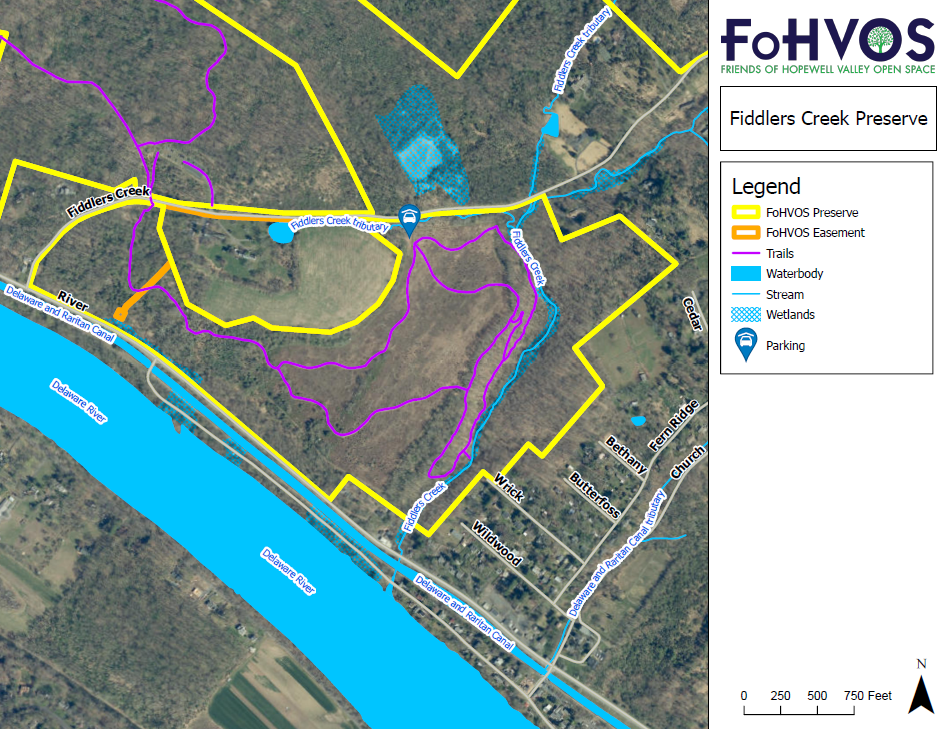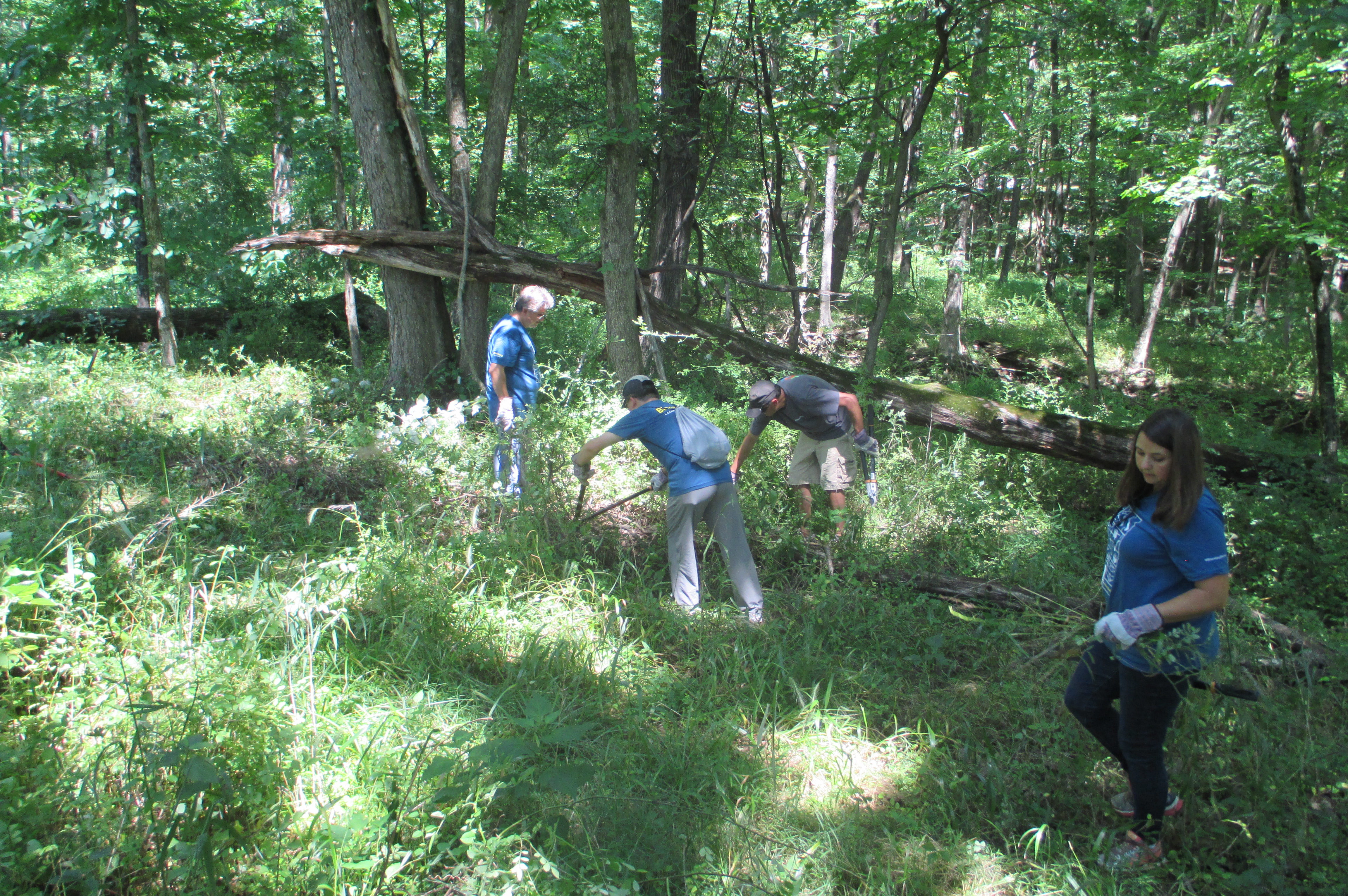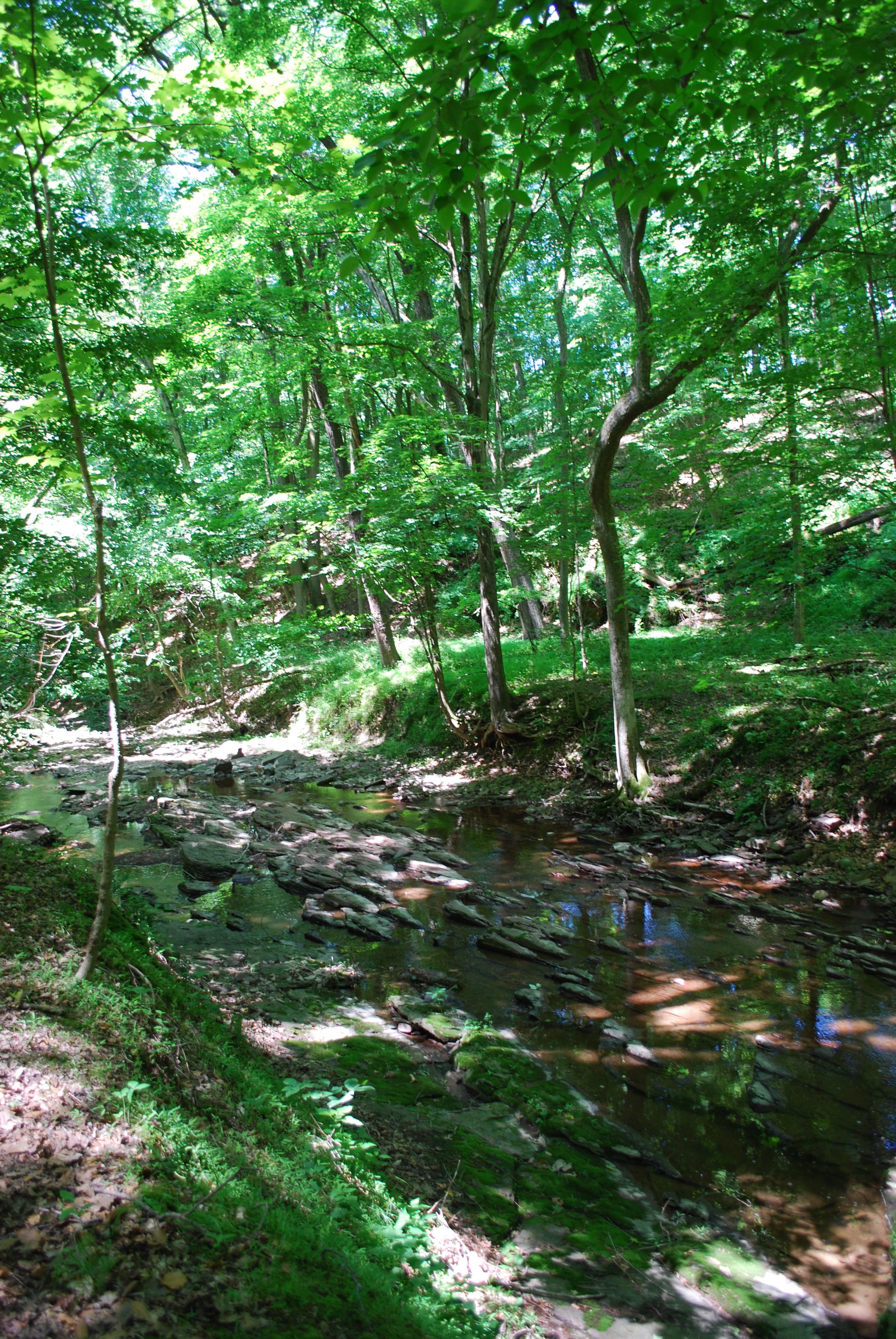Fiddler’s Creek Preserve is comprised of mature upland forest along Fiddler’s Creek, meadow, and second growth forest. The tract is contiguous with the Ted Stiles Preserve at Baldpate Mountain, separated only by Fiddler’s Creek Road. Mercer County, Friends of Hopewell Valley Open Space, Hopewell Township, and D&R Greenway partnered to protect this land. This preserve is co-owned with New Jersey Department of Environmental Protection, Mercer County Park Commission and Hopewell Township.
Click here to read the stewardship plan for more detailed ecological information.
The Fiddler’s Creek Preserve contains deciduous forest, deciduous woodland, shrubland, agricultural lands, and urban lands. It contains a wide range of plant communities. The western shrublands feature open dry areas with cool season grasses, red cedar , Tree-of-Heaven, and blue curls. Moister areas with the shrublands contain ash, nettles, garlic mustard, and Allegeny monkeyflower. Flood-prone areas along Route 29 feature walnut, white snakeroot, and sycamore. The forest along Fiddler’s Creek reveals the historic native plant community, albeit disturbed by past land use (it appears that grazing animals were led through the forest to the Creek — barbed wire and domination by species like small leaf bittercress and white snakeroot) and hampered by deer browse.
The forest patch found on the Preserve and surrounding area is an important stop – over habitat (spring and fall resting and feeding) for migratory species. However, the presence of cowbirds and the lack of a woodland shrub layer reduce the chance of nesting and successful breeding.
The forest found along the banks of Fiddler’s Creek dates to the 1930s. Notably, the old forest’s soil type is unique from the rest of the preserve. Steep topography appears to have been the factor limiting agricultural use. However, in two areas that are less steep the plant communities are degraded, possibly by grazing animals.
Here, species range from upland to mesic to floodplain species including sugar maple, American linden, Chestnut oak, shagbark hickory, hackberry, witch hazel, black cohosh, Christmas fern, rock cap fern, marginal wood fern, wild ginger, bladdernut, wreath goldenrod, and Virginia waterleaf. Because of excessive deer browse no populations are robust.
The preserve has been identified as habitat for State Threatened and Special Concern species, including Wood Turtle. Federally Endangered and State Endangered and Threatened species occur within 1/4 mile of the preserve.
The biggest threats to the ecological health of the preserve are excessive deer browse and invasive species. FoHVOS is performing a forest restoration at this preserve and creating wildlife habitat through a USDA Forest Service Grant and the help of volunteers.
The parking area has room for 5 cars. Click here for directions or use the coordinates 40.316757, -74.884695.
Forest Restoration
FoHVOS is hard at work performing a forest restoration at the Fiddler’s Creek Preserve. We have been planting native trees inside a large, fenced-in area to protect them from deer browse. Thanks to the volunteers who came out to help with planting! To date, volunteers have completed 120 hours of planting.

Wildlife Habitat
Various groups have helped us create habitat for our native wildlife. One group helped install bluebird boxes and several groups helped cut down invasive shrubs to create brush piles for small animals. Thanks to our volunteers for all their help!
These projects were also funded by grants from the Natural Resource Conservation Service; Conservation Resources, Inc.; Washington Crossing Audubon Society. Our partners on the preserve acquisition, Mercer County, assisted with heavy shrub clearing and provided funds from the US Fish & Wildlife Service grant they received to assist with stewardship work.










